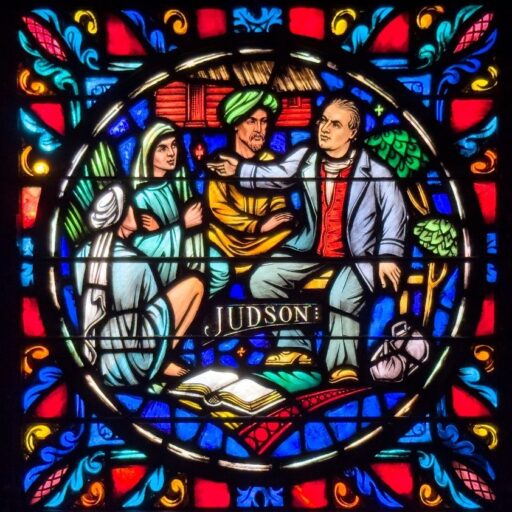1872-1965
Judson College[1]
Rangoon, Burma Yangon, Myanmar
Responding to the requests of Karens in Burma, American missionaries stepped forward in 1869 to suggest the creation of an institution of higher learning especially for the Karens. The proposal was discussed at the meeting of the Baptist Union in Chicago in 1870 and approved thus paving the way for a fifth academic venture that would use the Judson name. In 1872 Rangoon Baptist College was opened with instruction in English and 17 promising young Karen men as students. The original campus was on property purchased from missionary Cephas Bennett and across the street from the Karen Theological Seminary formed in Moulmein but transferred to Rangoon in 1853.
The interracial Burma Baptist Convention, formed in 1870, declared in 1874 that the new college would be open to all constituent groups including Burmese, Kachins, Mon, Shans, Chin and all others. By 1877 there were 106 students enrolled with 76 being Karens. By 1882 the University of Calcutta recognized the quality of the graduates of Rangoon Baptist College and allowed them to sit for matriculation examinations

Ten years later (1892) the Rangoon Baptist College Church (see entry 1892-present) was organized on the college campus with David Gilmore as the first pastor. He accepted the challenge of teaching the Pali language at the college while holding pastoral responsibilities at the church. That same year the University of Calcutta recognized Rangoon Baptist College as a First Arts College and authorized its freshman and sophomore students to take their examinations in English, History, Mathematics, Pali Language, Chemistry, Physics and Logic. In 1909 Rangoon Baptist College became a full-fledged degree institution receiving approval to add junior and senior level courses and offer a Bachelor of Arts degree.
In 1919 with full accreditation through the University of Calcutta, Rangoon Baptist College changed its name to Judson College recognizing “the intellectual relation of the institution to the first western scholar who made a large contribution to Burma’s welfare.”[2] The next year Judson College withdrew from the University of Calcutta and joined with Rangoon College to establish the University of Rangoon. In 1925-26 there were 337 students enrolled at Judson College.
American Baptists conducted a Judson Fund Drive from 1927 to 1930 and with the help of John D. Rockefeller, Jr., raised enough money to build a new campus at the University of Rangoon which was completed in the midst of the Great Depression in 1934. The Burmese government paid half the cost of the buildings, excluding the chapel and pastor’s residence, with the understanding that if it should every need to take over the Judson buildings, it could do so by paying compensation to the amount of the Baptist investment, or half of the value of the buildings at the time of the take-over.
Required to close during World War II, Judson College resumed operation under government control in 1950 when separate colleges were discontinued and the University of Rangoon assumed responsibility for all teaching. Most of the Judson College buildings were taken over by the government who paid compensation as previously agreed. The Burma Baptist Convention used those funds to erect a Student Christian Center and provide scholarships for Baptist students through a program called Judson Aid. When the military took over the government to establish a socialist state in 1965 all Christian schools ceased to exist along with other private schools in Burma.
With the political changes in Burma, the end had come for the Christian college in Burma. However, many Judsonians carried on the Christian educational legacy. The institution that was initially intended only for the Karen, had in reality set no boundary for uplifting the intellectual culture of all the people in Burma.[3]
+++++++++++++++
[1] Angelene Naw, The History of the Karen People of Burma (Philadelphia: Judson Press, 2023), pp. 71-83. All material for this entry comes from Dr. Naw’s research.
[2] Ibid., p. 76.
[3] Ibid., p. 80.
